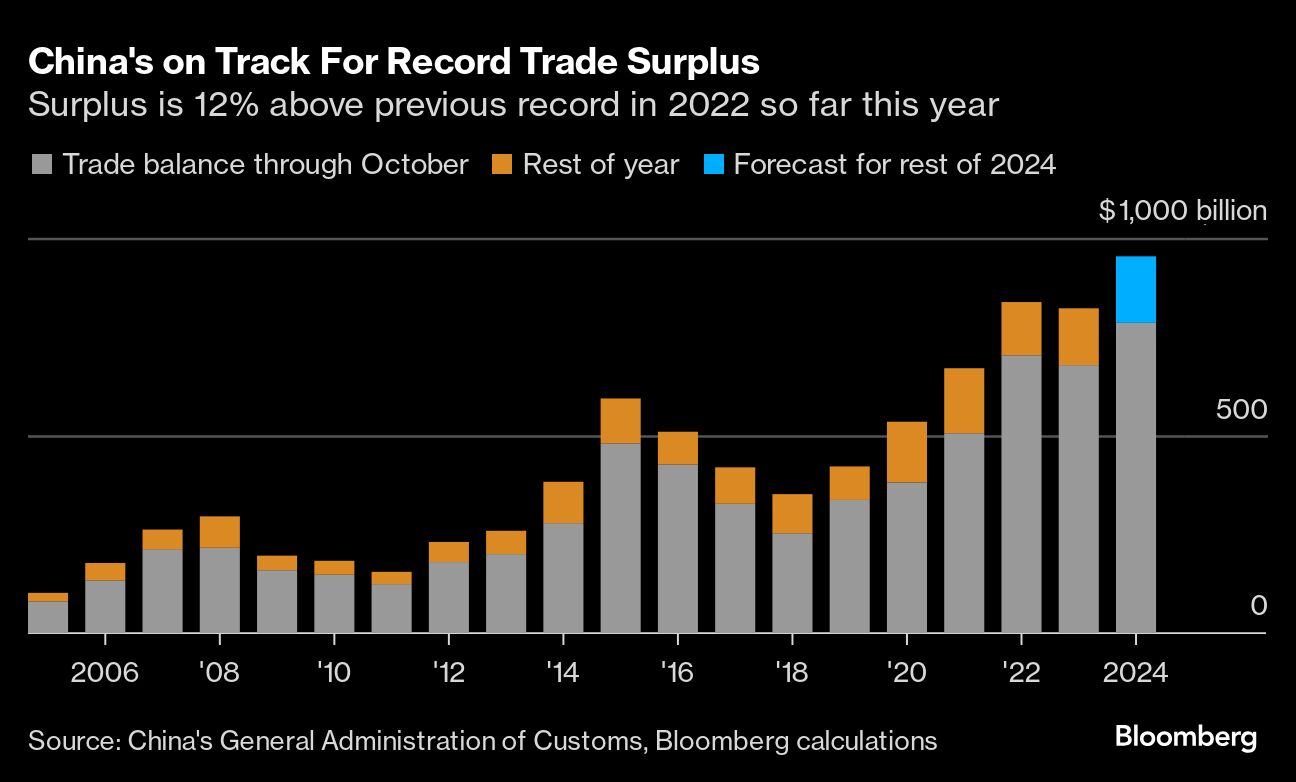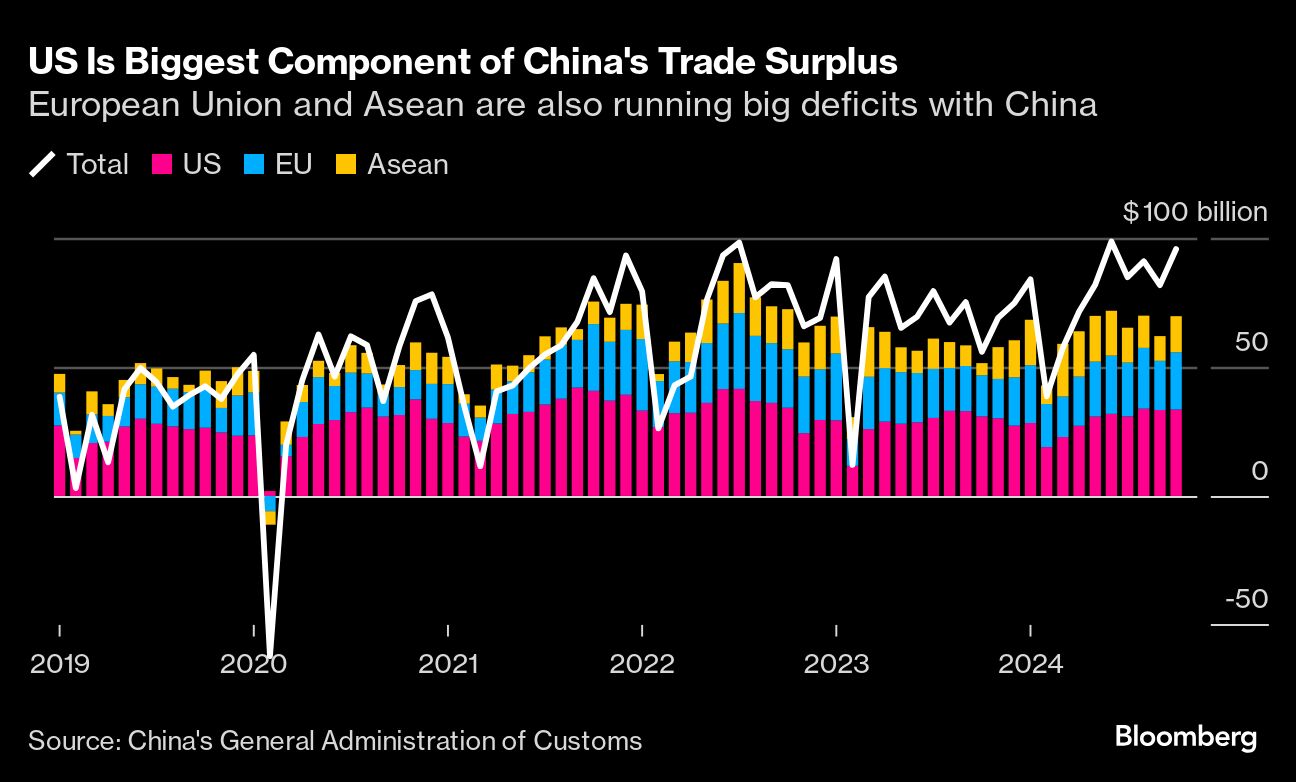
(Nov 11): China’s trade surplus is on track to hit a fresh record this year, increasingly leaving it on a collision course with some of the world’s biggest economies by aggravating an imbalance in global commerce that risks provoking US President-elect Donald Trump.
The difference between Chinese exports and imports is set to reach almost US$1 trillion (RM4.41 trillion) if it continues to widen at the same pace as it has in the year to date, according to Bloomberg calculations. The goods trade surplus soared to US$785 billion in the first 10 months, according to data released last week, the highest on record for that period and an increase of almost 16% from 2023.
“With Chinese export prices still falling, export volume growth was enormous,” Brad Setser, a senior fellow at the Council on Foreign Relations, said on X. “The overall story is of an economy that is again growing off exports.”
China has been relying more on exports to compensate for the weakness of domestic demand that Beijing has only recently tried to redress by injecting stimulus into the economy.
The increasingly lopsided picture has generated pushback from a growing number of countries, and the new Trump administration is likely to impose tariffs that would reduce the flow of exports to the US. Countries from South America to Europe have already raised tariff barriers against Chinese goods such as steel and electric vehicles.
Foreign companies are also pulling money from China, with foreign direct investment (FDI) liabilities dropping in the first nine months of the year, according to data released last Friday. Should the decline continue for the rest of the year, it would be the first annual net outflow in FDI since at least 1990, when comparable data begins.
The response from Beijing so far has been to promise more support for companies, with the state council announcing last Friday it would lift financial support to industries to promote stable foreign trade growth, foster economic development, and stabilise employment.
Chinese companies have been ramping up their export performance over the past few years. By contrast, the slowing economy, increasing electrification and rising replacement of foreign manufactured goods with domestic alternatives are suppressing demand for imports.
The result in October was the third widest surplus in history that came just below June’s record. The trade surplus calculated in yuan hit 5.2% of nominal gross domestic product in the first nine months of this year, the highest since 2015 and well above the average level for the last decade.
The surplus with the US rose 4.4% so far this year from the same period last year. It increased 9.6% with the European Union and jumped almost 36% with the 10 Southeast Asian nations in Asean, the latest data showed.
Imbalances are also growing with many other nations. China now exports more goods to almost 170 countries and economies than it buys from them, the most since 2021.
A currency war may be brewing as well. India’s central bank has said it is ready to let the rupee weaken if China lets the yuan drop to counter US tariffs.
A falling yuan would make Chinese exports cheaper and could further widen the surplus with India, which hit US$85 billion so far this year, 3% higher than in 2023 and more than double the level five years ago.
Uploaded by Tham Yek Lee


